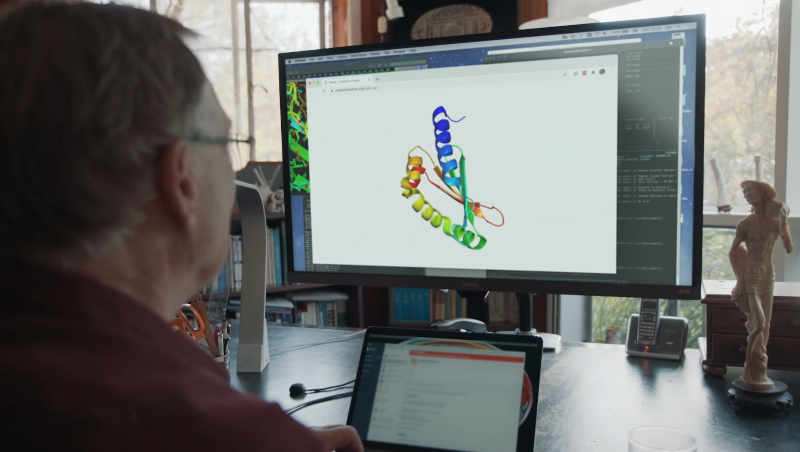Credit:www.freepik.com
GSH, a tripeptide composed of glutamate, cysteine, and glycine, plays a crucial role in cellular antioxidant defense mechanisms, protecting cells from oxidative stress and maintaining redox homeostasis. This review will explore the relationship between GSH metabolism, aging-related diseases, and epigenetic regulation, drawing insights from recent research utilizing multiomics approaches.
GSH metabolism and aging
Aging is associated with a decline in GSH levels and impaired antioxidant defense mechanisms, contributing to the increased susceptibility of cells to oxidative stress and the progression of age-related diseases. A recent work conducted by Benjamin et al. have shown that GSH synthesis was upregulated in old cells, but the overall levels of GSH were depleted. This discrepancy was due to the formation of two distinct subpopulations of old cells: GSHhigh cells, similar to young cells in function and GSH content, and GSHlow cells, with impaired functionality and significantly lower GSH levels.
Futhermore, they found the GSHhigh cells mounted a compensatory response by upregulating NRF2 activity and GSH synthesis, while GSHlow cells lacked this compensatory mechanism and were susceptible to oxidative stress. The bimodal distribution of GSH in old cells was driven by the antagonistic balance between NRF2 and NF-kB, with NRF2 promoting GSH synthesis and NF-kB inhibiting it.
GSH metabolism and aging-related diseases
GSH metabolism is dysregulated in various aging-related diseases, including Alzheimer's disease (AD), Parkinson's disease (PD), and muscle wasting.
In Alzheimer's disease (AD), the study by Sun et al. revealed that short-chain fatty acids (SCFAs) produced by the gut microbiota promoted the astrocyte-neuron glutamate-glutamine shuttle, thereby enhancing GSH synthesis and offering protection to neurons against oxidative damage. SCFA supplementation in APP/PS1 mice with AD-like pathology was found to improve cognitive function, reduce amyloid-beta (Aβ) deposition, and attenuate tau hyperphosphorylation.
In Parkinson's disease (PD), astrocytes were shown to play a crucial role in maintaining neuronal GSH levels and offering protection against oxidative damage. SCFAs were found to enhance astrocyte-neuron communication and the glutamate-glutamine shuttle, thus further supporting their neuroprotective role in PD.
In muscle wasting, the research by Benjamin et al. indicated that the decline in GSH levels and the impairment of antioxidant defense mechanisms contributed to muscle fiber atrophy and reduced regenerative capacity. GSHhigh muscle stem cells (MuSCs) were found to be more capable of contributing to muscle regeneration than their GSHlow counterparts, emphasizing the significance of GSH metabolism in muscle regeneration.
Epigenetic regulation of GSH metabolism
Epigenetic modifications, such as DNA methylation and histone modifications, play a crucial role in regulating GSH metabolism during aging and disease. These modifications can impact gene expression, chromatin structure, and cellular function, ultimately influencing GSH levels and antioxidant defense. DNA methylation, the addition of a methyl group to the cytosine base of DNA, is one of the most well-studied epigenetic modifications. In the context of GSH metabolism, DNA methylation can influence the expression of genes involved in GSH synthesis and antioxidant defense.
Histone modifications, such as acetylation and methylation of histone tails, can alter chromatin structure and accessibility, influencing gene expression and GSH metabolism. KDM2B, a histone demethylase, is a key component of the ncPRC1.1 complex, which plays a role in transcriptional activation. Chavdoula et al. demonstrated that KDM2B promoted the expression of genes involved in GSH metabolism via histone H3K36me2/me1 and H3K79me3/me2 demethylation. Additionally, KDM2B enhanced the binding of MYC and ATF4, two key transcription factors involved in GSH metabolism, to their target genes by promoting chromatin accessibility and removing repressive histone marks like H3K27me3. Developing drugs that target epigenetic regulators like KDM2B, NRF2, MYC, and ATF4 could potentially restore GSH levels and improve antioxidant defense in aging-related diseases.
In summary, GSH metabolism is a critical regulator of cellular redox homeostasis and plays a pivotal role in aging and aging-related diseases. The bimodal distribution of GSH in old cells and the epigenetic regulation of GSH metabolism by factors like KDM2B provide novel insights into the complex interplay between metabolism, epigenetics, and aging-related diseases. Future research should focus on elucidating the underlying mechanisms of GSH metabolism regulation during aging and disease, as well as developing targeted therapeutic strategies to restore GSH levels and improve antioxidant defense mechanisms.
Reference:
Benjamin DI, Brett JO, Both P, Benjamin JS, Ishak HL, Kang J, Kim S, Chung M, Arjona M, Nutter CW, Tan JH, Krishnan AK, Dulay H, Louie SM, de Morree A, Nomura DK, Rando TA. Multiomics reveals glutathione metabolism as a driver of bimodality during stem cell aging. Cell Metab. 2023 Mar 7;35(3):472-486.e6.
Sun Y, Zhang H, Zhang X, Wang W, Chen Y, Cai Z, Wang Q, Wang J, Shi Y. Promotion of astrocyte-neuron glutamate-glutamine shuttle by SCFA contributes to the alleviation of Alzheimer's disease. Redox Biol. 2023 Jun;62:102690.
Chavdoula E, Anastas V, La Ferlita A, Aldana J, Carota G, Spampinato M, Soysal B, Cosentini I, Parashar S, Sircar A, Nigita G, Sehgal L, Freitas MA, Tsichlis PN. Transcriptional regulation of amino acid metabolism by KDM2B, in the context of ncPRC1.1 and in concert with MYC and ATF4. Metabolism. 2024 Jan;150:155719.







Post comments